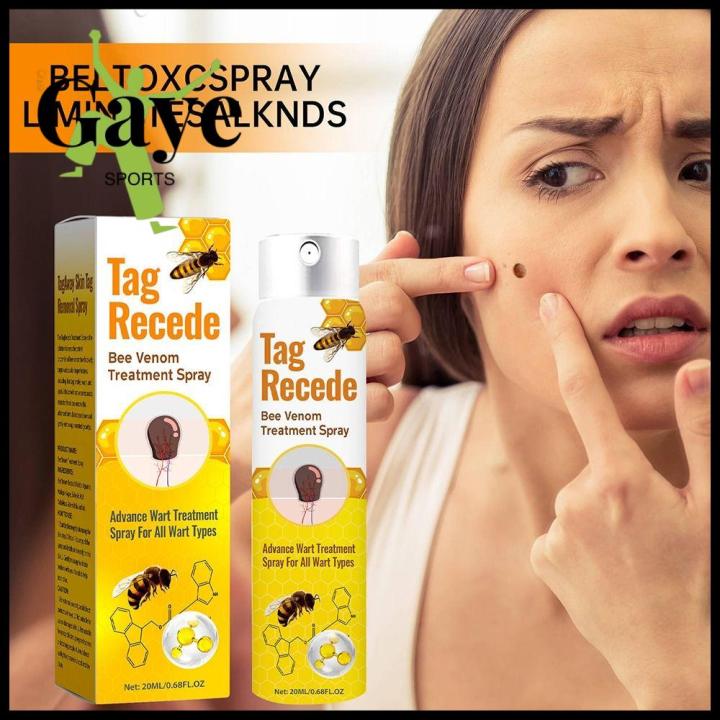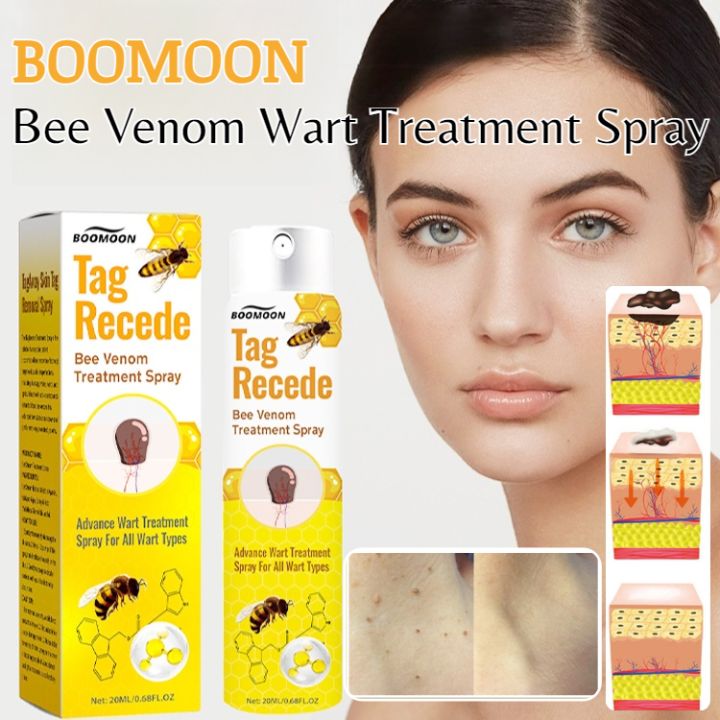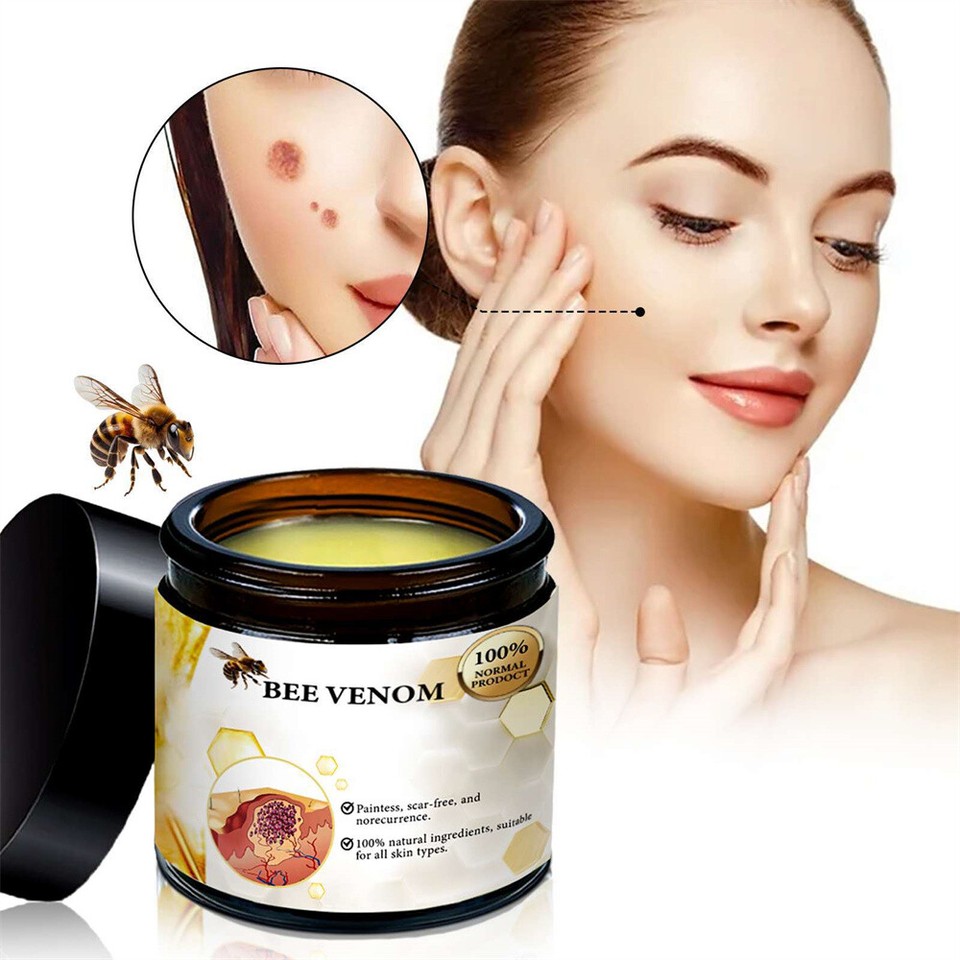Does Bee Venom Remove Skin Tags

Imagine strolling through a sun-drenched meadow, the air buzzing with the gentle hum of bees flitting from flower to flower. Sunlight dances on your skin, but a nagging little bump – a skin tag – catches your eye in your peripheral vision. Could the very creatures that create nature's golden nectar hold the key to banishing these pesky imperfections?
The buzz around bee venom, also known as apitoxin, as a potential remedy for skin tags is growing, fueled by anecdotal evidence and its known anti-inflammatory and immune-modulating properties. However, despite these promising aspects, there is currently no scientific evidence to support the claim that bee venom can effectively and safely remove skin tags.
Understanding Skin Tags: The Basics
Skin tags, medically termed acrochordons, are small, benign growths that typically appear in areas where skin rubs against skin, such as the neck, armpits, groin, and eyelids. They are usually flesh-colored or slightly darker and are attached to the skin by a thin stalk.
While skin tags are generally harmless and don't cause pain or discomfort, they can be aesthetically undesirable for some individuals. They are composed of collagen fibers and blood vessels surrounded by skin.
Several factors are believed to contribute to the development of skin tags, including genetics, obesity, insulin resistance, and hormonal changes, particularly during pregnancy. They are incredibly common, affecting a significant portion of the population.
The Allure of Bee Venom: What Is It?
Bee venom, or apitoxin, is a complex mixture of compounds secreted by worker bees. It contains enzymes, peptides (including melittin and apamin), and other substances known to have various biological effects.
For centuries, bee venom has been used in traditional medicine, particularly in apitherapy, to treat conditions like arthritis, multiple sclerosis, and chronic pain. These practices often involve controlled bee stings or injections of purified venom.
The primary active component of bee venom, melittin, possesses potent anti-inflammatory, analgesic, and even antimicrobial properties. These properties have spurred interest in bee venom's potential applications in various fields, including dermatology.
Bee Venom and Skin: Examining the Potential
The theory behind bee venom's potential effect on skin tags often revolves around its anti-inflammatory and immune-modulating actions. Inflammation can contribute to skin growths, and regulating the immune response might theoretically influence their development.
Some proponents suggest that bee venom could potentially disrupt the blood supply to the skin tag, leading to its eventual shrinking and disappearance. Others speculate that its enzymes may break down the tissue of the skin tag.
However, it's crucial to acknowledge that these are speculative hypotheses, not backed by robust scientific evidence specifically regarding skin tags. Many of the claimed benefits are extrapolations from bee venom's known effects on other conditions.
The Lack of Scientific Evidence: A Critical Gap
Despite the growing interest, there are currently no clinical trials or scientific studies that have specifically investigated the efficacy and safety of bee venom for the removal of skin tags. This lack of research represents a significant gap in our understanding of its potential application.
Existing studies on bee venom focus on its effects on conditions like arthritis, pain management, and certain inflammatory skin disorders. These findings cannot be directly translated to the treatment of skin tags without dedicated research.
The absence of controlled trials means we don't know the optimal dosage, application method, or potential side effects of using bee venom for skin tag removal. It also means there is no evidence to show if it works.
Potential Risks and Side Effects: Proceed with Caution
Using bee venom on the skin, particularly without proper guidance, carries potential risks. Allergic reactions are a significant concern.
Some individuals are highly allergic to bee venom and can experience severe reactions, including anaphylaxis, which is a life-threatening condition requiring immediate medical attention. Even in non-allergic individuals, bee venom can cause local reactions such as redness, swelling, pain, and itching.
Applying bee venom directly to the skin without proper dilution or formulation can also lead to skin irritation, burns, or even scarring. Because skin tags are often located in sensitive areas, the risk of adverse reactions is a significant consideration.
Safe and Effective Alternatives: What Works?
Fortunately, several safe and effective methods exist for removing skin tags. These procedures are typically performed by a dermatologist or other qualified healthcare professional.
Common methods include:
- Surgical excision: Cutting off the skin tag with a scalpel.
- Cryotherapy: Freezing the skin tag off with liquid nitrogen.
- Electrocautery: Burning off the skin tag with an electric current.
- Ligation: Tying off the base of the skin tag with surgical thread to cut off its blood supply.
These procedures are generally quick, relatively painless, and have a low risk of complications when performed by a skilled professional. Over-the-counter skin tag removal products are also available, but their effectiveness can vary, and it's essential to follow the instructions carefully.
Seeking Professional Guidance: When to See a Doctor
It is always advisable to consult with a dermatologist or other healthcare provider before attempting to remove a skin tag. A professional can properly diagnose the growth to ensure it is indeed a skin tag and not a more serious skin condition, such as a mole or skin cancer.
A doctor can also recommend the most appropriate removal method based on the size, location, and number of skin tags. They can also perform the procedure safely and effectively, minimizing the risk of complications.
If a skin tag changes in size, shape, or color, becomes painful or itchy, or bleeds, it's essential to seek medical attention promptly. These changes could indicate a more serious underlying condition that requires further evaluation.
The Bottom Line: Proceed with Caution and Skepticism
While the potential benefits of bee venom in various medical applications are intriguing, there is currently no scientific basis for using it to remove skin tags. The risks associated with bee venom use, particularly allergic reactions and skin irritation, outweigh any potential benefits.
Until robust scientific evidence emerges to support its efficacy and safety, it's best to rely on proven and medically accepted methods for skin tag removal. Consulting with a dermatologist remains the safest and most effective approach to addressing these common skin growths.
Perhaps future research will uncover a role for bee venom in dermatological treatments, but for now, the buzz surrounding it as a skin tag remedy remains largely unsubstantiated. Focus on methods with a track record of success and prioritize your skin's health and safety.


















